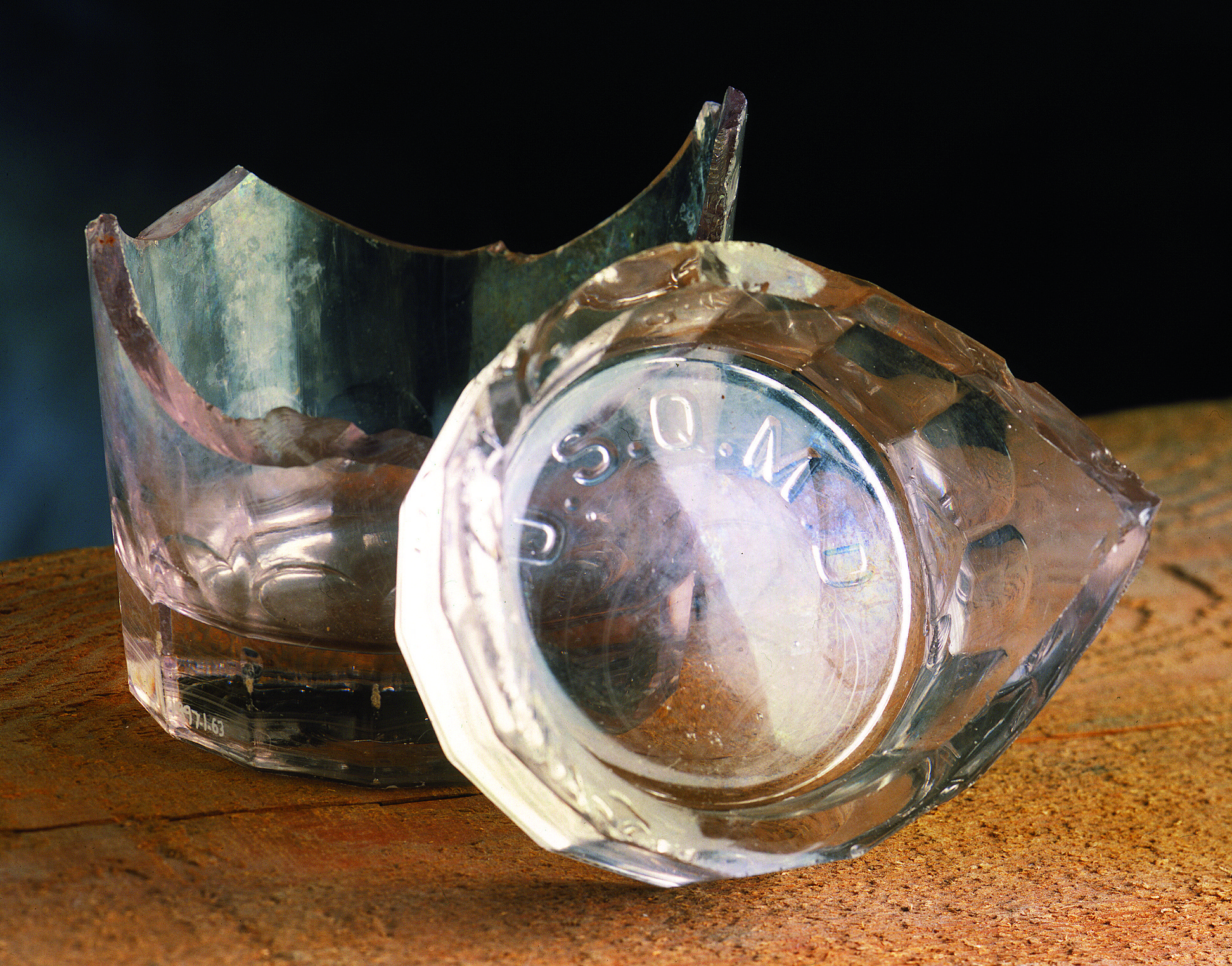
U.S.Q.M.D. Tumblers
These Quartermaster Department tumblers were excavated from the same dump as the plate. They were originally clear. Manganese was added to glass as a de-coloring agent from the mid-1880s until

These Quartermaster Department tumblers were excavated from the same dump as the plate. They were originally clear. Manganese was added to glass as a de-coloring agent from the mid-1880s until
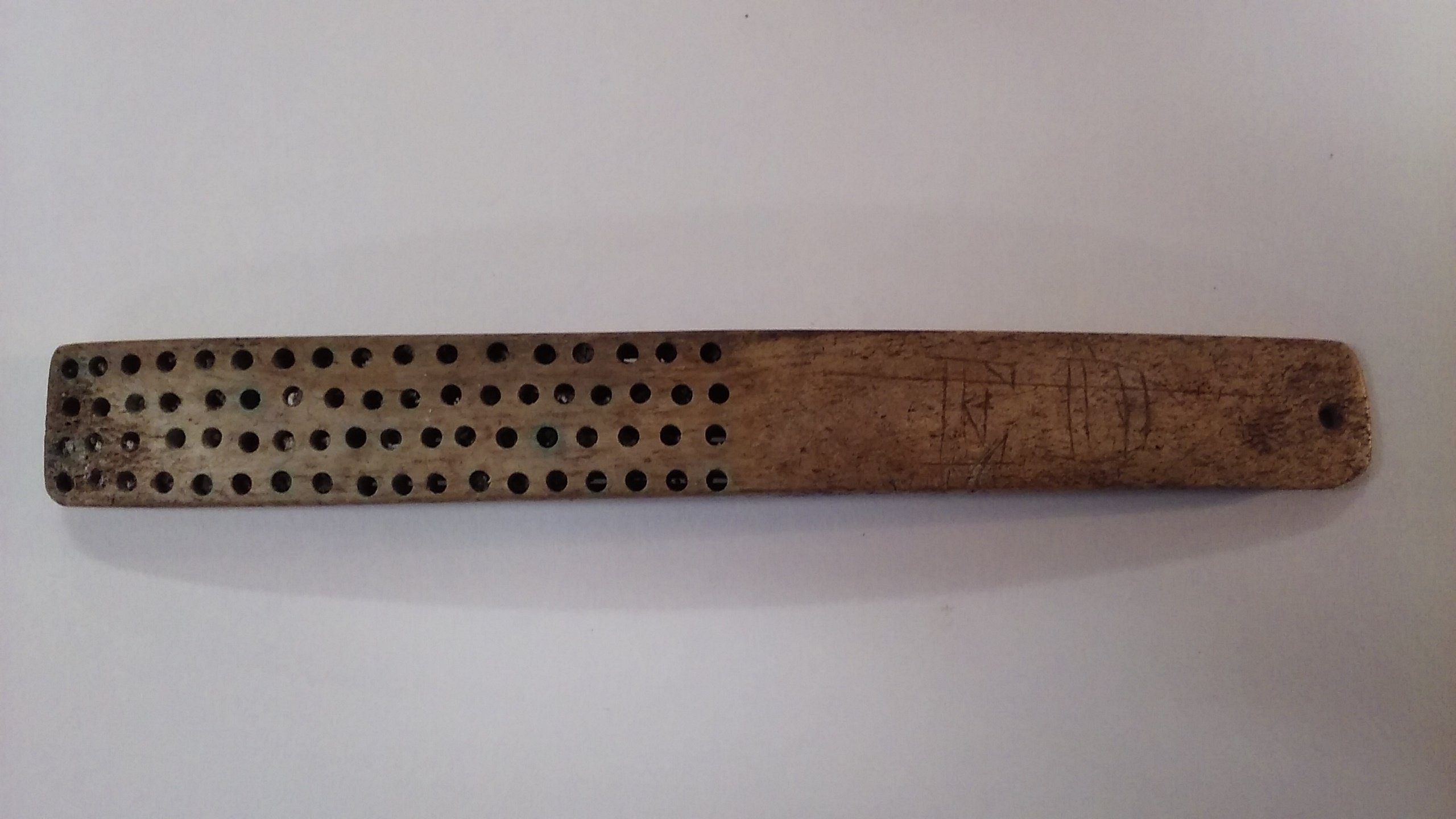
This bone brush handle, found outside the fort, may have belonged to a soldier. It is engraved with the name or initials “ED.”
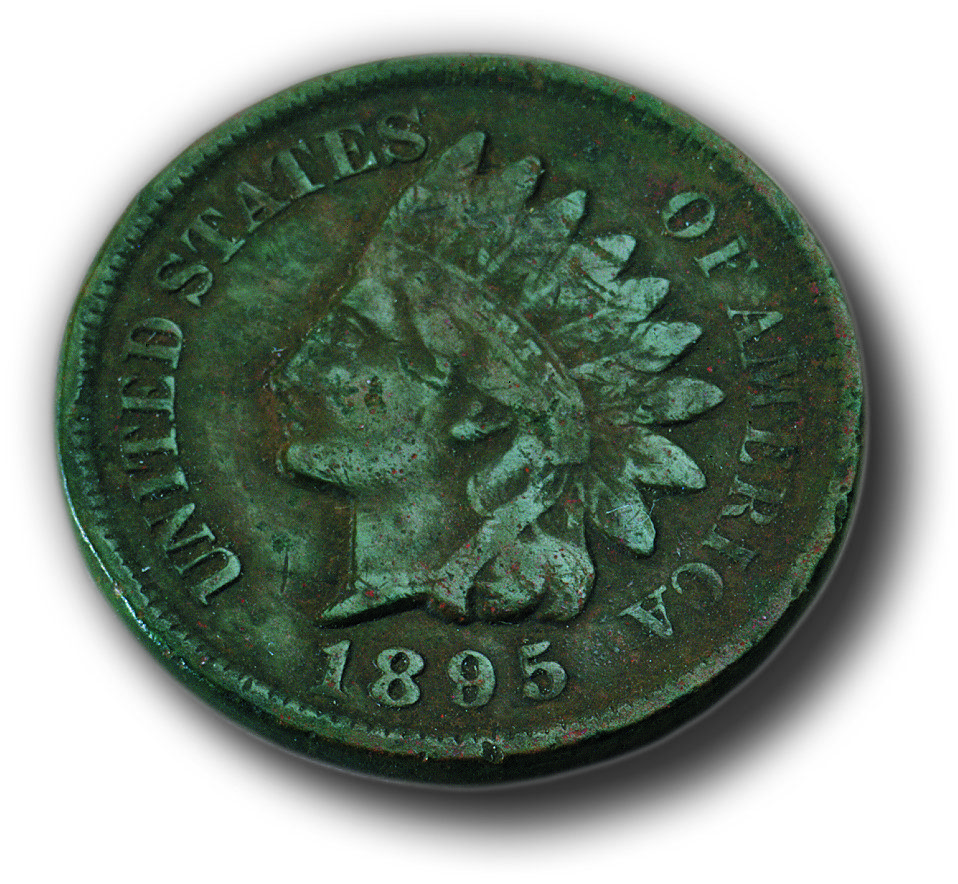
On September 16, 1895 the U.S. army marched out of Fort Mackinac for the last time. The fort, military reservation and Mackinac Island National Park were turned over to the
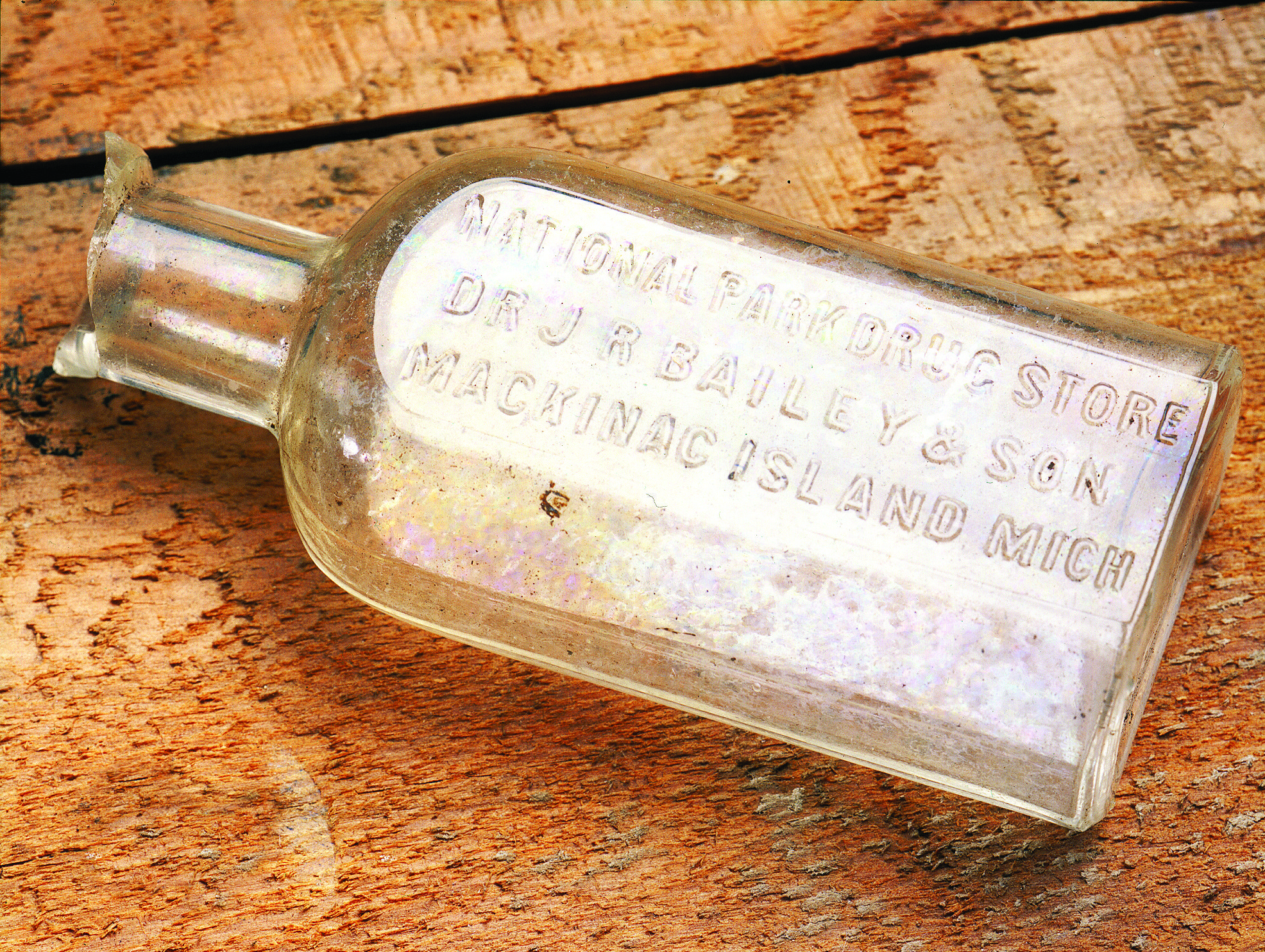
This pharmaceutical bottle was manufactured for the NATIONAL PARK DRUG STORE, DR J R BAILEY & SON, MACKINAC ISLAND MICH. The Bailey family ran a pharmacy and general store for
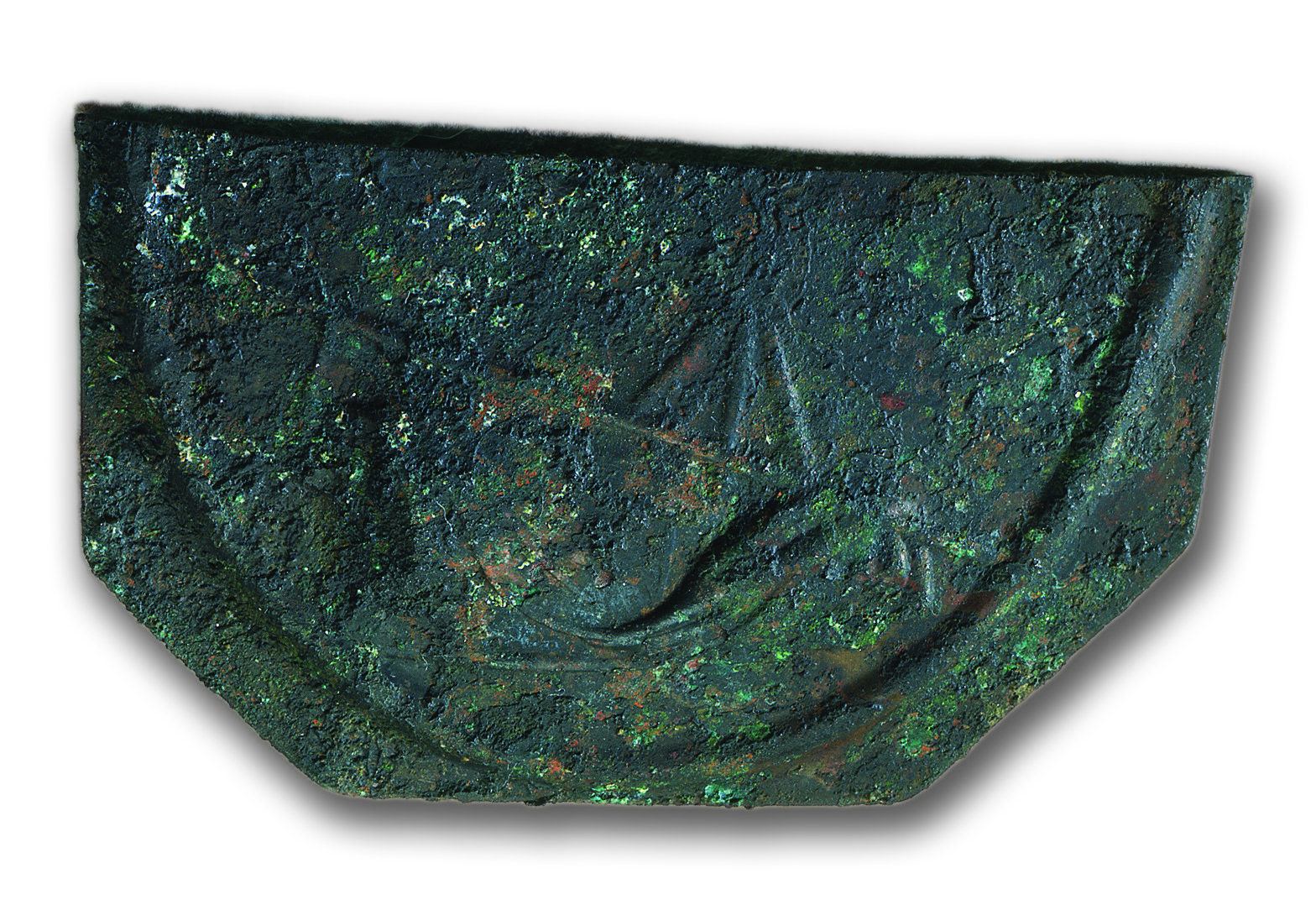
This is the lower half of a plate that would have gone on the front of an American infantryman’s hat from 1814 to 1821. The design, though difficult to make
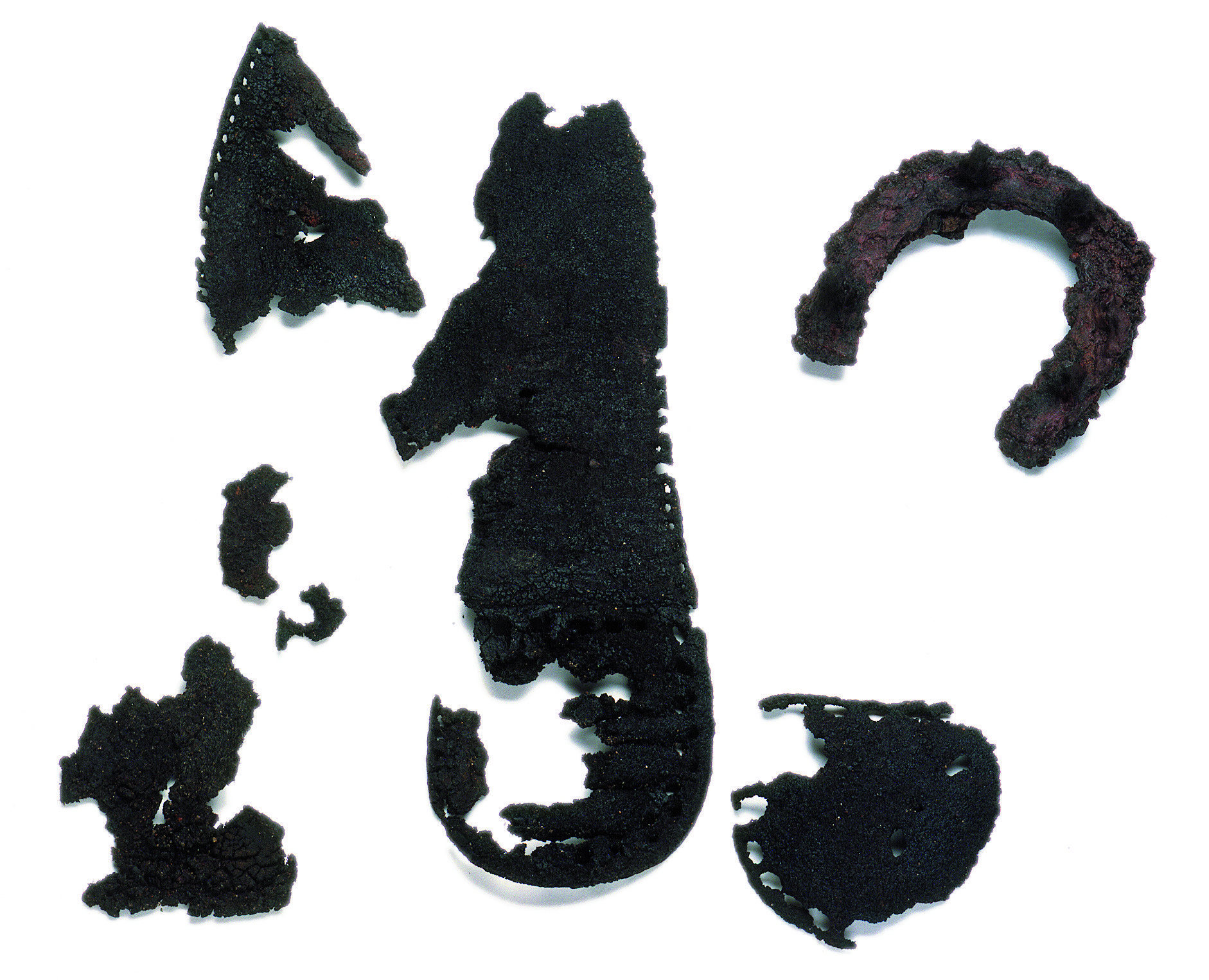
Following the War of 1812, the rooms of the provision storehouse building were used for a variety of other purposes. In 1816 one of these was housing tailors and shoemakers
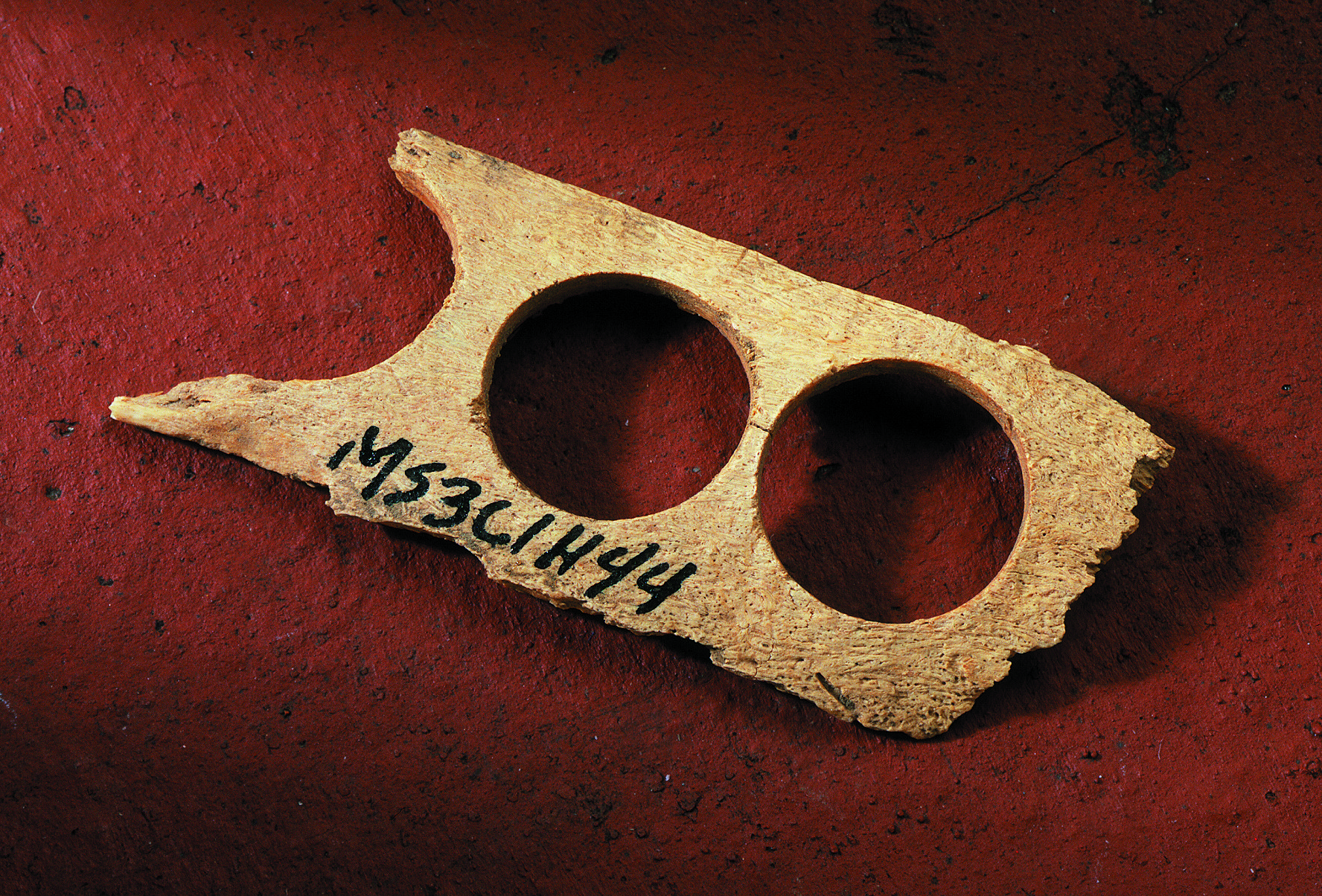
This piece of bone is scrap from the making of bone button backs. A circular drill was used to cut bone discs from flat pieces of animal bone. These bone
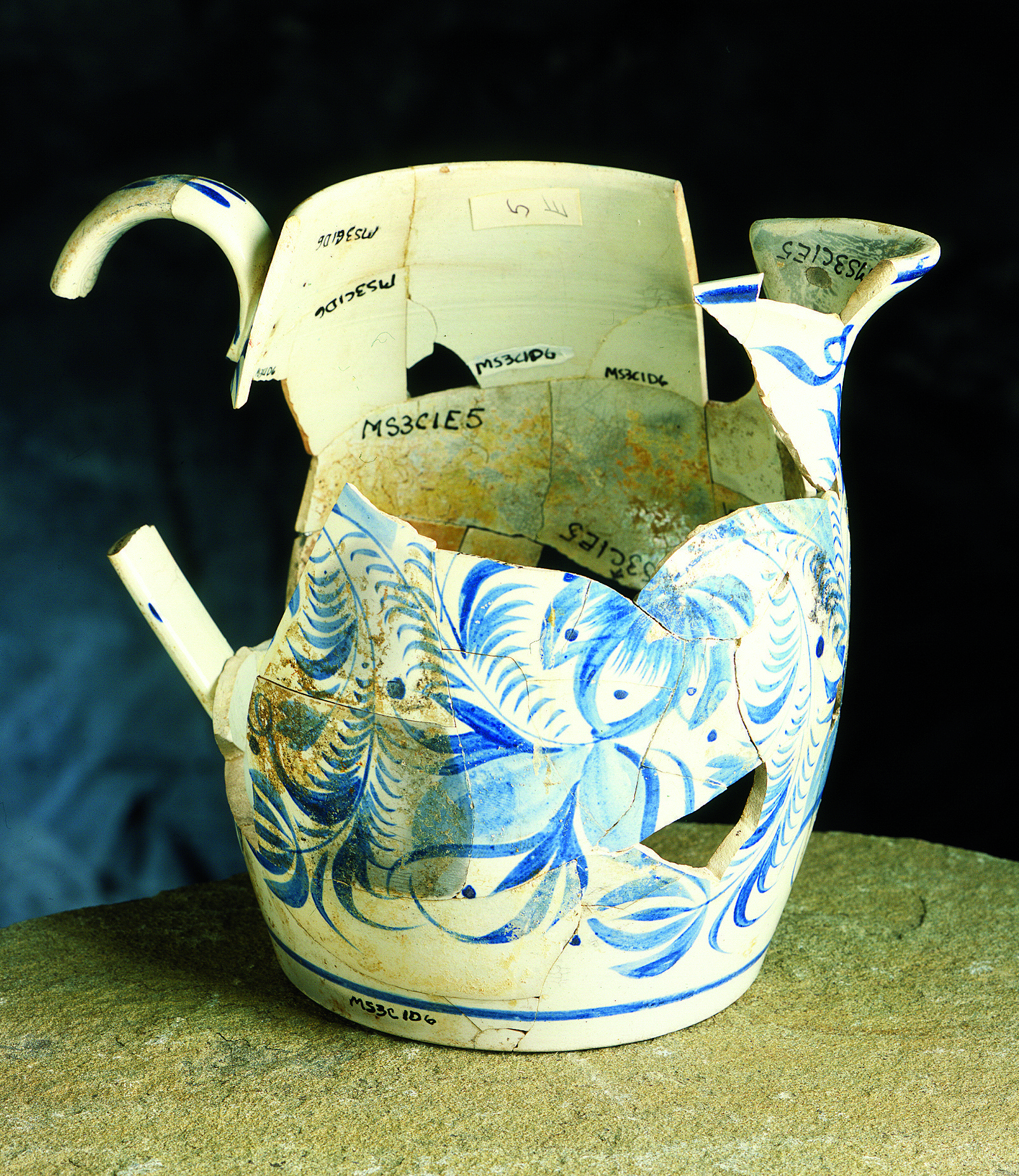
Pearlware was a common type of ceramic in the early nineteenth century. Even after transfer printing was developed, hand-painted designs continued, and were somewhat cheaper. This reassembled pitcher is one
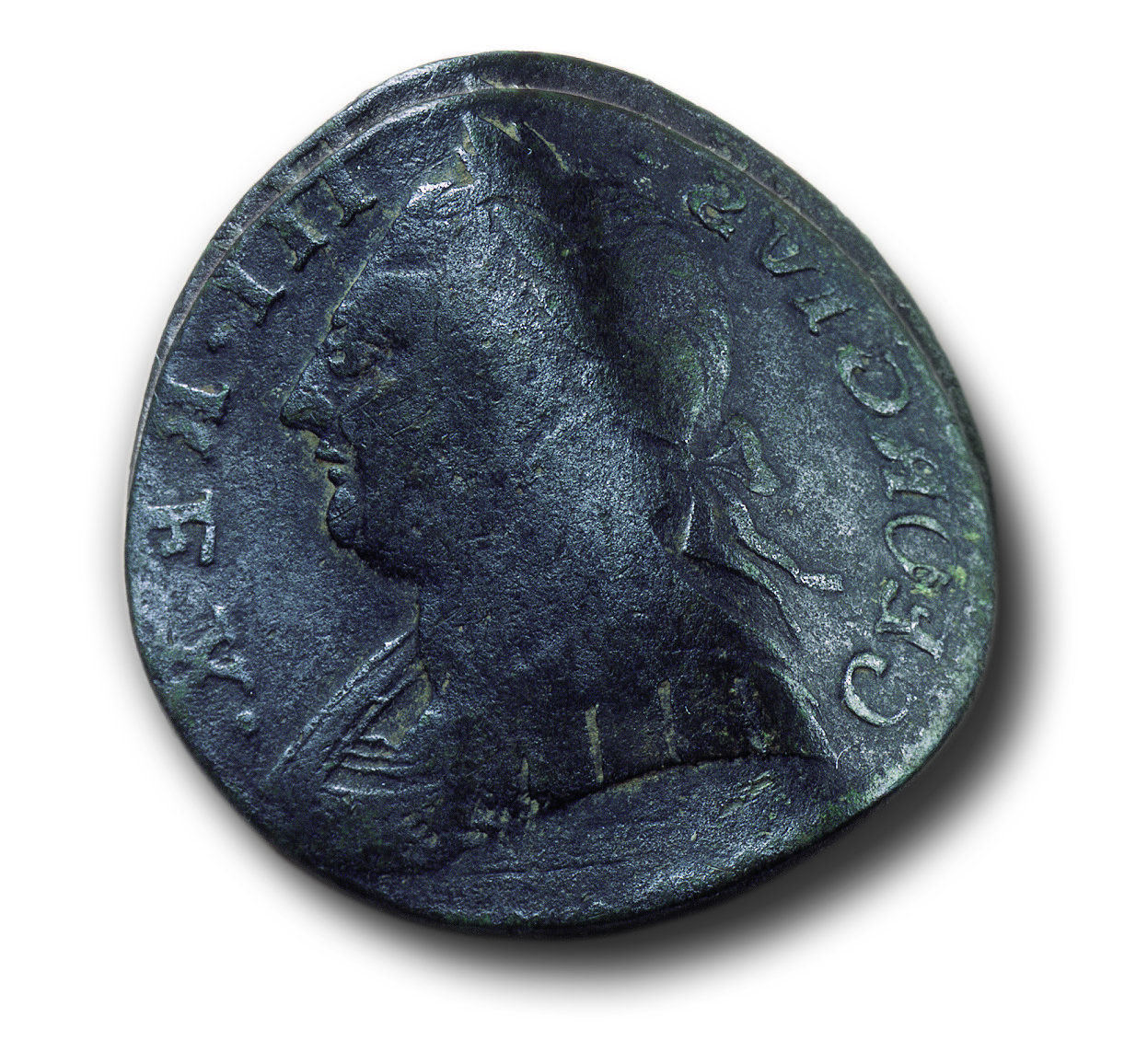
This 1776 George III halfpenny actually predates Fort Mackinac. It was found during the restoration of the fort wall. One of the soldiers who helped build the fort between 1779